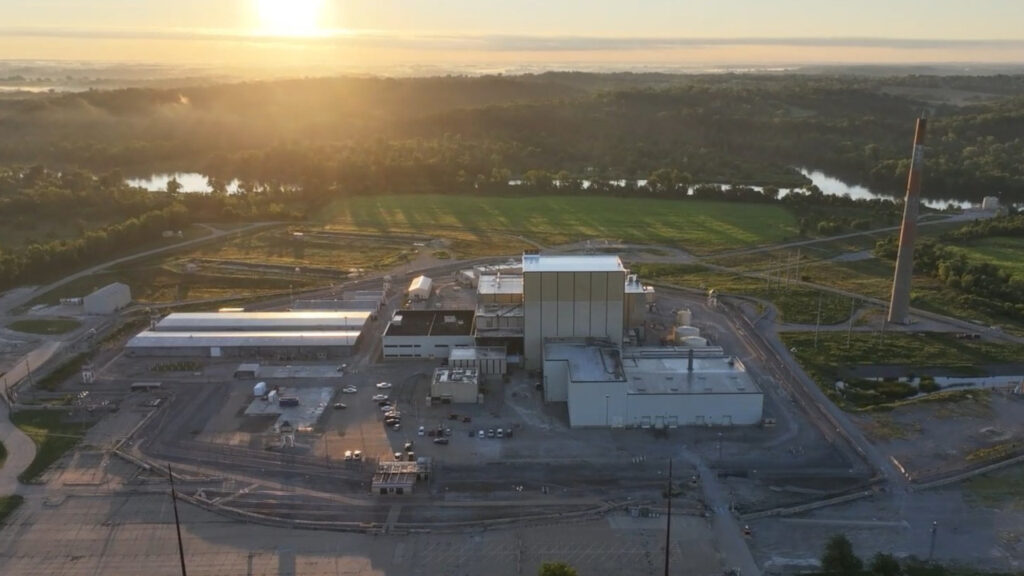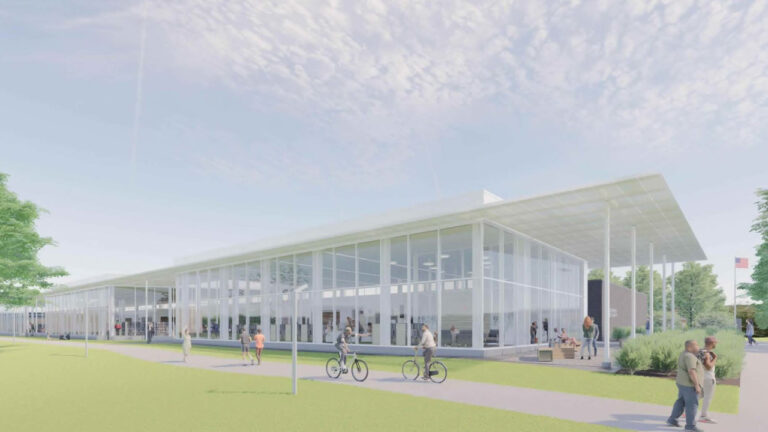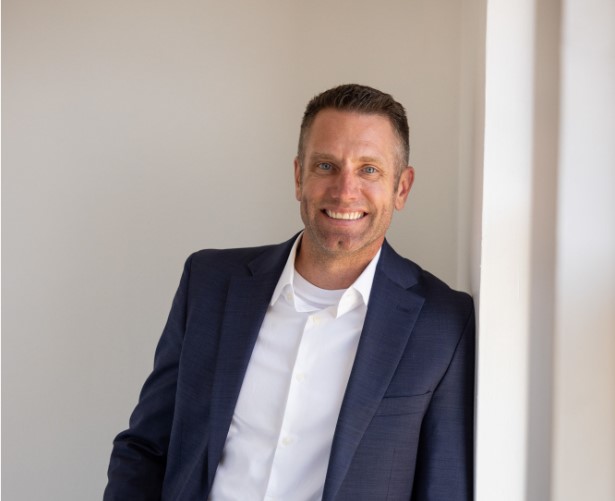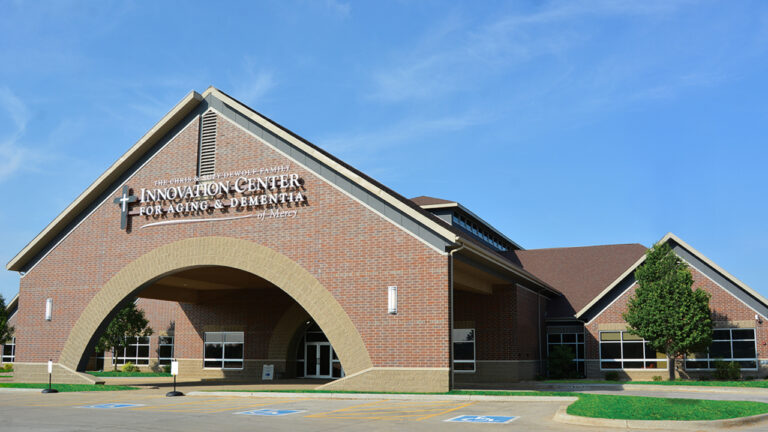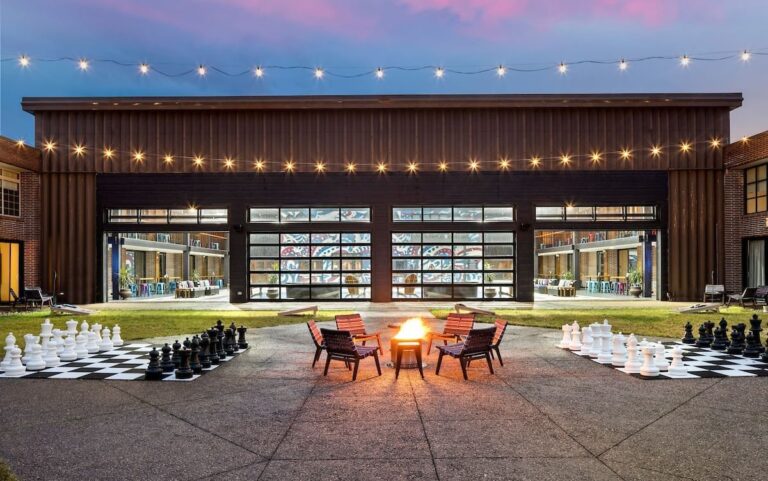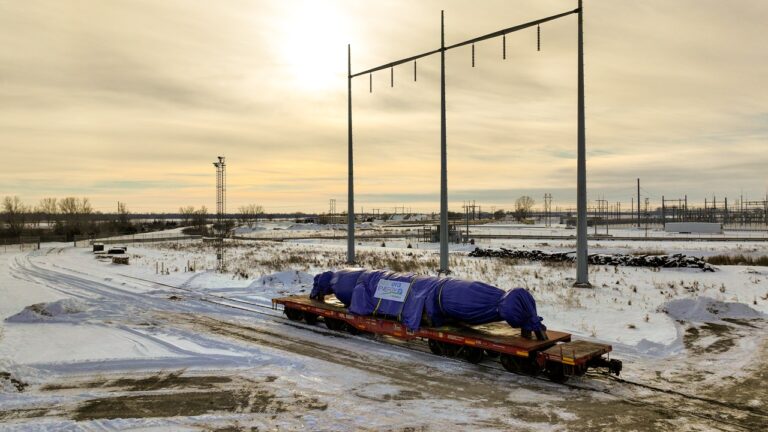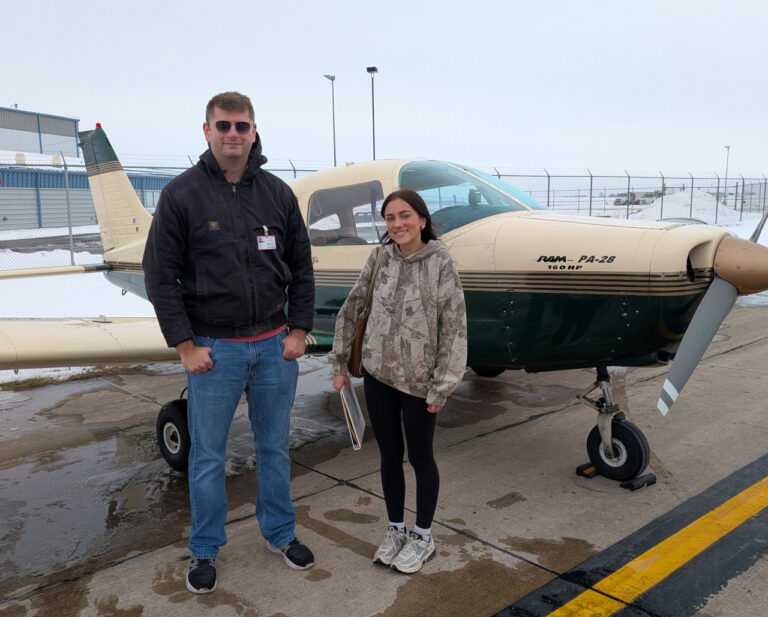Restarting the Duane Arnold Energy Center nuclear power plant near Palo would be “a mistake” that wouldn’t adequately address power demands and would have “devastating consequences” for the Corridor, including public health and public safety concerns, speakers asserted during an online news conference Monday, Sept. 29 hosted by the Iowa chapter of the Sierra Club, an environmental organization with chapters in all 50 states.
The virtual press conference was held as NextEra Energy Resources, the majority owner of the Duane Arnold plant, continues to explore the possibility of restarting the nuclear power facility, which was shut down in 2020 and is currently in the process of being decommissioned. NextEra has filed a request with the federal Nuclear Regulatory Commission (NRC) to restart the plant to address rising electrical demand, and in August, the Federal Energy Regulatory Commission issued a waiver that allows NextEra to transfer its grid interconnection rights from three planned solar projects to the Duane Arnold nuclear plant.
The NRC has not yet granted a license to restart the plant, but NextEra officials say that if the license is issued, the plant could resume operations as soon as late 2028.
Speakers at Monday’s news conference raised several concerns with the plant’s potential restart.
Mark Z. Jacobson, a professor of civil and environmental engineering at Stanford University who has researched air pollution, climate change and renewable energy, said that nuclear energy production brings several problems, from higher construction and production costs to emissions of hazardous materials, high heat and water vapor emissions.
Overall, he said, equivalent emissions from nuclear plants are up to 37 times higher than those from wind turbines.
He noted that Iowa currently generates 79% of its energy needs from renewable sources, primarily via wind turbines, and that Iowa’s average energy costs are three cents per kilowatt hour lower than the national average – consistent with other states that produce a high percentage of their electrical power from renewables.
“It’s just a myth for people to claim that renewables are driving up electricity prices,” Mr. Jacobson said. “They’re keeping electricity prices low. It’s only when you don’t have renewables that your electricity prices are going higher.”
He said that nuclear plants have a significantly longer development timeline – 20 years or more, in some cases – than renewable energy projects, and that expanding nuclear power production worldwide has the potential to increase the proliferation of nuclear weapons in other countries.
He also asserted that utilities are pursuing nuclear power generation projects primarily because of the availability of government subsidies.
“Nuclear is completely wasteful,” he said. “The reason it’s being pushed is because there are now subsidies available to keep them open. That’s the only reason they’re going for these, because it’s just free money they’re getting from the federal government to get rid of solar, to push solar out and push wind out as much as possible. There’s no scientific or logical or business case for it. Is just a complete money grab for subsidies.”
Joe Mangano, executive director of the Radiation and Public Health Project in New York, said nuclear plants, including Duane Arnold, release more than 100 isotopes into the surrounding area – “new chemicals that are not found in nature.”
“Each of them are radioactive,” Mr. Mangano said, “and even though many of them are kept and retained as nuclear waste, some of these chemicals are routinely released into the air and into the water, and thus getting into the human bodies through the food chain.”
He cited a 1990 National Cancer Institute study that found increased cancer rates in those living near nuclear plants. He said the study showed cancer rates among adolescents and adults up to age 39 in Linn and Benton counties were 3.5% higher than the state average in the first 23 years of the plant’s operation, and 12.5% higher than the state average in the final 23 years of operation.
He said the infant death rate in Linn and Johnson counties declined 18% in the two years following the plant’s shutdown, compared with just a 2% decline nationally and a 9% decline statewide.
And in the same period, he said, premature births in Linn and Johnson counties declined by 20%, compared to a 4.5% increase in Iowa and a 1% increase nationally.
Mr. Mangano acknowledged that “these are just early statistics, early descriptions of what happened to local health of the young during the time that Duane Arnold operated and during the time after shutdown,” and that other factors could also play a role in the improved health figures.
Still, he said, “there should be no final decision on the future of Duane Arnold unless these statistics, and additional ones, (are) thoroughly analyzed and thoroughly understood by officials and shared with the public. People need to know if there is an actual health risk to restarting the plant, and that should be a major part of the discussion.”
Wally Taylor of Cedar Rapids, conservation chair and legal chair of the Iowa chapter of the Sierra Club, said that despite assertions from nuclear power proponents, “nuclear power is not clean or renewable.”
“Nuclear reactor fuel is made from uranium, which is mined from the ground, just like oil, gas or coal,” Mr. Taylor said. “No one refers to those energy sources as renewable. Nor is nuclear clean. The uranium that is mined leaves tailings, and uranium processing leaves behind radioactive waste and harmful chemicals. But the really dirty aspect of nuclear power is the radioactive waste, which is radioactive for hundreds of thousands of years, and no one knows what to do with it.”
He said the Duane Arnold plant is one of several that closed in recent years “because they are not economical in the face of renewables.”
“Now NextEra, which owns Duane Arnold, wants to restart the plant,” he said. “This is a risky proposition.”
He also said that the NRC “has no regulations allowing a nuclear plant in decommissioning status to restart.”
“The NRC’s decommissioning regulation is clear, that the purpose is to close the plant and terminate the license,” he said. “So the nuclear industry has been cobbling together a scheme to use existing NRC regulations they claim will allow closed reactors to be restarted. Duane Arnold has been in decommissioning status for five years and not operating during that time, so it is not just a matter of putting fuel back in the reactor and starting it up.”
He said NextEra has applied for an exemption from the NRC’s decommissioning rule.
“An exemption is just for an unanticipated circumstance in a specific situation that would cause undue hardship and (would make it) unfair to apply the decommissioning rule,” he said. “But the NRC in the past, and federal courts, have said that an exemption should be used in very rare circumstances. That’s clearly not the case with Duane Arnold. Restarting Duane Arnold is a planned undertaking not causing any undue hardship to NextEra. This is a misuse and perversion of the NRC rules … the exemption is not being used as an exemption, but as a new policy not contemplated by NRC rules. It amounts to the NRC doing rulemaking without going through the procedure of developing a rule and inviting public participation.”
Mr. Taylor also said structures and components in the Duane Arnold plant have likely been “allowed to corrode and fall into disrepair, which is a recipe for disaster.”
“We can’t rely on the NRC, unfortunately, because the NRC envisions itself as a part of the nuclear industry, not as an independent regulator,” he said. “I know that’s hard for the public to believe, but I’ve been through that many times, and the NRC devises its regulations and policies to allow the industry to do whatever it wants, and it creates hurdles and fortresses to prevent the public to participate and raise objections to anything that the nuclear industry wants to do.”
Don Safer, co-chair of the Sierra Club’s Nuclear Free Team, noted that the Duane Arnold plant houses a GE Mark I reactor, identical to the Fukushima reactors that melted down and exploded in March 2011.
“It’s an old, dangerous, well-documented, flawed design as far back as 1972,” he said.
“These reactors were actually designed in the 1960s. These are really old designs from the very beginning, almost the infancy of the nuclear industry.”
In 1975, three of the designers of the GE Mark 1 reactor issued a public statement saying the design was “so flawed it could lead to a devastating accident, because the containment design does not take into account the dynamic loads that could be experienced with a loss of coolant.”
“Fukushima happened almost as predicted, in a way,” he said.
The Duane Arnold reactor, which began operations in 1974, was designed to run for 40 years, and thereafter received approval to operate for an additional 20 years.
“That life extension process has been deeply criticized as being really inappropriate or just not as attuned to safety as it should be,” Mr. Safer said. “A lot of the components in these reactors were designed to last 40 years. There’s no way to determine the integrity of critical inner reactor components that are subject to the intense conditions inside a nuclear reactor, extreme heat, neutron bombardment, high pressure and rapid temperature changes. The possibilities of component failure and a serious accident increase as these reactors age and the compounding problem of disuse for an over five-year period. That’s just a huge threat.”
He also cited the dangers of spent fuel being stored on site at Duane Arnold, in a dry storage system that utilizes stainless steel tanks with walls about a half inch thick.
“Those canisters were designed for short term storage,” he said. “And there’s a lot of serious questions … as to just how safe that system is for longer terms. Those canisters are filled with an inert gas. If oxygen gets to the fuel rods, you get spontaneous explosion or spontaneous slow burning, or at the very least a leak of massive amounts of radiation. And people don’t generally recognize that the amounts of radiation in those canisters can cause radiation problems for the surrounding areas, equal to that of a containment loss of an operating reactor. The danger with this reactor does not end when the reactor is closed, but this fuel sitting there can be a huge problem, and there are significant unknowns that scientists have not been able to identify.”
Duane Arnold Energy Center spokesperson Bill Orlove issued an updated statement on the potential restart of the plant.
“To power Iowa’s growing economy and to help meet America’s surging power demand, NextEra Energy Duane Arnold is exploring the resumption of operations at the Duane Arnold Energy Center,” the statement said. “While a final decision has not been made, we are taking the steps necessary to restart Iowa’s only nuclear plant. This includes undertaking a comprehensive engineering study, talking with potential customers and recruiting the employees who would be necessary for restart, such as licensed nuclear operators.
“If we’re successful on all these and other fronts, and decide indeed that we are going to restart the plant, Duane Arnold Energy Center would contribute 600 megawatts of generation toward the Administration’s goal of adding 5,000 megawatts of nuclear energy by 2030.
“It’s important to note that Duane Arnold Energy Center operated safely for decades, providing reliable energy to Eastern Iowa homes and businesses. The health and safety of the public is always our top priority. All nuclear plants, including Duane Arnold, have rigorous monitoring protocols and layers of protection in place to ensure the safety of employees and the public, including radiation monitors. The U.S. Nuclear Regulatory Commission sets safety standards that are continuously reviewed and implemented at the facilities. Highly trained experts run America’s nuclear plants. With the NRC’s oversight and layers of safety precautions, a nuclear plant is one of the safest industrial environments in the United States.
“Restarting a nuclear power plant is a serious undertaking, and we have a dedicated team working diligently to pull together all the necessary pieces to return Duane Arnold Energy Center to service. The plant’s possible restart will bring millions of dollars in revenue to the county, the Cedar Rapids Community School District and other districts to fund critical programs and services for residents. It would also bring hundreds of permanent, high-quality, well-paying jobs to the area.
“As we continue to go through this process, we are committed to remaining engaged with local and state stakeholders.”
Republican Gov. Kim Reynolds has identified nuclear energy expansion as one of her priorities in advancing Iowa’s energy systems.


